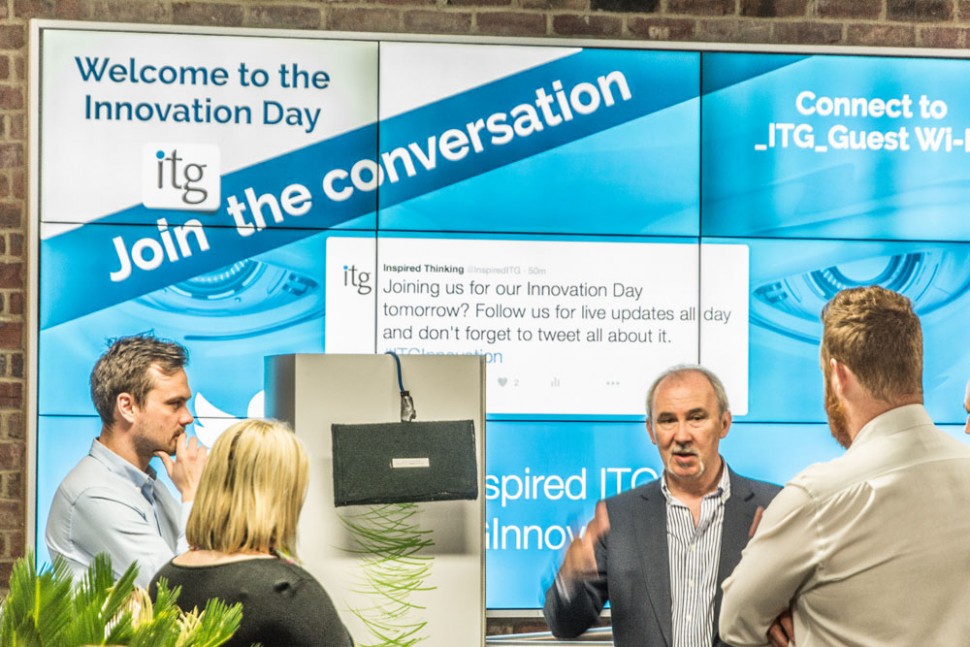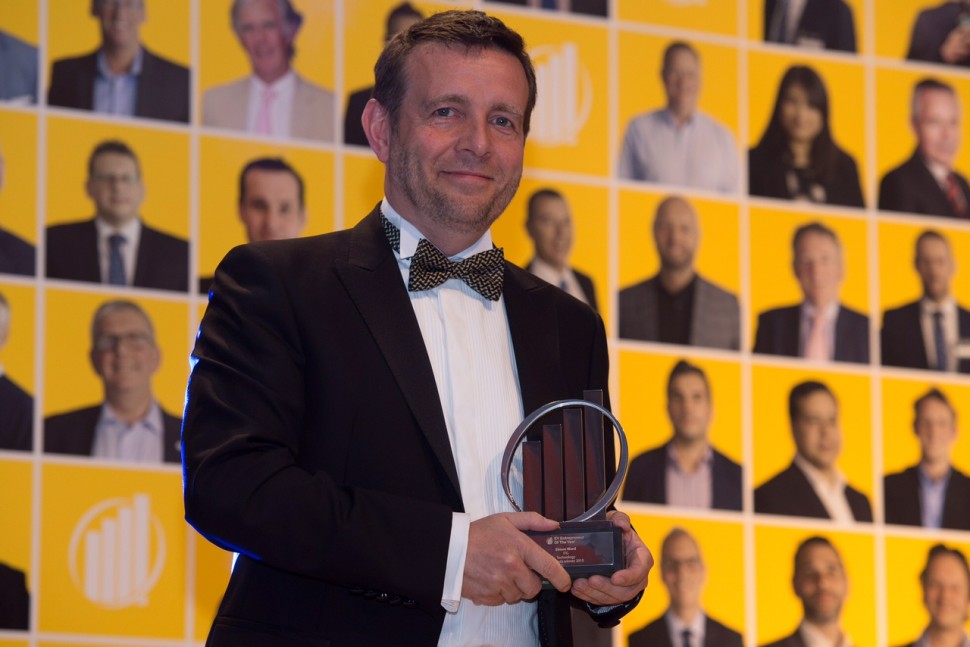Digital
-
People talk about ‘Death by PowerPoint’, but the biggest killer in marketing is not PowerPoint, but its Microsoft stablemate: the Excel spreadsheet.
Among the numerous big brands and retailers we consult with about helping them make their marketing operations more efficient, the most commonly occurring statement I hear is, “can you do anything about all these spreadsheets?” – usually accompanied by pulling out of hair and a sallow-faced, wide-eyed look of despair.
As it turns out, there is something we can do about it – but more about that later. First, what is it that makes marketers refer to their campaign spreadsheets by such affectionate names as the Spreadsheet of Doom or the Squares of Despair?
The first horror is version control. When companies run their campaigns and allocations via spreadsheets, there’s necessarily a requirement for several departments to be involved. Legion are the stories of departments all working off different versions, leading to the wrong assets being briefed, the wrong amount of print being ordered, and the wrong allocations being sent to stores.
Excel almost encourages easy mistakes. Delete one figure linked to a formula, and you can throw whole rows of important data out.
Checking and checking
There are also tortuously long checking processes to ensure all the information that has been put into a master spreadsheet by everyone from legal to HR to procurement is accurate and matches up.
“I’ve got a marketing degree,” I was told recently, “but I’ve just spent my afternoon running my finger over a spreadsheet.”
When you couple Excel issues with communications via email, with all the lack of visibility for anyone not in that particular chain, emails going into junk folders, and people never being able to find the right email, even when they have a vague recollection of receiving it, you have a recipe for errors and vast unnecessary duplication of effort.
Some of our recommendation to companies looking to us to help drive efficiencies is about process; the rest is about technology.
MRM efficiency
In an efficient marketing operation, the two go hand-in-hand. Manual campaign planning, email briefings and approvals, assets held on suppliers’ hard drives, store allocations spreadsheets (and guesswork) – all of these and more can be replaced by an efficient and flexible MRM platform.
Everything you require to run your operation is in one place, accessible to anyone with permissions, and with only one version of any data – the one within the system. All briefings, amendment and approval information is held in an easily accessible part of the software, rather than in the middle of a virtual forest of emails.
With the right MRM system, you can say goodbye to the Spreadsheet of Doom altogether – and get on with doing all those nice strategic things you dreamed of when you were doing your marketing degree.
Until next time
Simon Ward
About Simon Ward
Simon Ward ITG – Simon is the founder and CEO of pioneering technology-led marketing company, Inspired Thinking Group (ITG). ITG delivers best-in-class marketing software, procurement and studio services to dozens of blue-chip clients, including Audi, M&S, KFC, PUMA and Heineken.
Simon Ward SP Group – Prior to ITG, Simon founded SP Digital in 1998, and in 1999 bought SP Print to form SP Group, creating innovative marketing and point of sale displays for some of the world’s best-known retailers, including M&S, Sainsbury’s, Holland & Barrett and Calvin Klein.
-
Simon Ward explains how a day can make a big difference to marketers – especially when it’s dedicated to innovation.
I’ve always been immersed in technology. As CEO of SP Group’s digital arm, I was at the cutting edge of what was on the face of it a very traditional industry – printing.
At ITG, our core offering is based around automation technology, and we’ve just taken our first steps into the big data arena, with our recent addition of ITG Creator.
But even people who run technology companies can struggle to keep up with every development – the time investment can be daunting, especially as not every invention will make it off the drawing board.
Pace of change in technology
It took decades for telephones to reach 50% of the population. It took five years for mobiles to achieve the same penetration. Innovation is not only getting faster, so is its adoption.
Companies with a competitive technology edge are better placed to attract customers than those who are baffled by technology. But there are so many areas of innovation out there, how is a marketer to find the time to keep up with them all?
We decided to help.
Over the past week, our offices have been teaming with clients. This was an innovation for us – generally we only entertain one or two clients at a time. However, over 140 clients, most of them marketers, visited our offices together, but it wasn’t just to see us. We’d invited some guests.
An appetite for innovation
Augmented reality, 3D printing, virtual reality, 360 degree cameras, interactive video, HyperSound technology – there are a huge number of technologies designed to improve retail customer engagement. We sought out the best, and invited their keepers to demo them for our clients.
Marketers from Heineken, Puma, Tesco, Boots, Sainsbury’s and numerous other retailers and brands moved from area to area, scrutinising innovation after innovation, interrogating the technology, and putting faces to buzzwords.
It’s not the most obvious tactic for a technology company, to showcase other people’s products alongside your own. But building a partnership with your clients is about more than simply selling your wares – it involves providing added value, just as they aim to give added value to their customers.
It was an exceptionally successful day, eliciting numerous positive comments. But perhaps the most satisfying were from those who said, “I knew about this technology, but until I saw the demo I didn’t realise it was for us.”
This shows that even marketers who keep up with technological innovations rarely have the time to delve deeply enough to see all the angles. Even when you attend technology exhibitions, you often spend a lot longer tracking down items of interest than you do experiencing the innovations.
A single day spent looking at a dozen specially selected technologies, with the ability to question experts in a relaxed and engaging environment, can give you a significant catch-up.
It’s certainly something we’ll be doing again.
Until next time
Simon Ward
About Simon Ward
Simon Ward ITG – Simon is the founder and CEO of pioneering technology-led marketing company, Inspired Thinking Group (ITG). ITG delivers best-in-class marketing software, procurement and studio services to dozens of blue-chip clients, including Audi, M&S, KFC, PUMA and Heineken.
Simon Ward SP Group – Prior to ITG, Simon founded SP Digital in 1998, and in 1999 bought SP Print to form SP Group, creating innovative marketing and point of sale displays for some of the world’s best-known retailers, including M&S, Sainsbury’s, Holland & Barrett and Calvin Klein.
-
A little over twelve months ago, we were pleased to welcome Heineken as a client. One of the most celebrated brands in the world, the prestigious Dutch brewer runs marketing campaigns across the globe, and Inspired Thinking Group (ITG) was tasked with adapting its below-the-line assets for 178 nations.
Our specialism in local marketing – tailoring national campaigns and assets for often hundreds of individual outlets – was a perfect fit for Heineken. And ITG had the opportunity to demonstrate that oceans and continents, languages and cultures, were no barrier to successful localisation.
Round-the-clock services
But there is another aspect of our business that would benefit our new partner. Our artwork and packaging studio operates 24/7. We are, as it were, ‘always on’ (find out more about Inspired Thinking Group’s studio)
This has proved extremely popular with our UK clients. They know if the work is urgent, they can send us a brief in the afternoon and receive the artwork the following morning – all managed effortlessly through our cloud-based Media Centre platform.
But one chap’s morning is another chap’s evening, and when you’re a company that’s rapidly expanding its services around the globe, you can hardly down tools at 5.30pm Greenwich Mean Time and expect to prosper in a world that never sleeps.
Quality artwork
To speed of content creation and global convenience, add quality. Most mistakes are made when people rush. If you’re scrambling to finish that poster or packaging design before the whistle blows, that’s when the ball gets dropped.
But when there’s another team you can pass the ball on to, the scrambling ceases and calm professionalism prevails. 24/7.
Until next time…
About Simon Ward
Simon Ward ITG – Simon is the founder and CEO of pioneering technology-led marketing company, Inspired Thinking Group (ITG). ITG delivers best-in-class marketing software, procurement and studio services to dozens of blue-chip clients, including Audi, M&S, KFC, PUMA and Heineken.
Simon Ward SP Group – Prior to ITG, Simon founded SP Digital in 1998, and in 1999 bought SP Print to form SP Group, creating innovative marketing and point of sale displays for some of the world’s best-known retailers, including M&S, Sainsbury’s, Holland & Barrett and Calvin Klein
-
Simon Ward discusses the many reasons a company might rebrand, some admirable, some less so.
The dreaded rebrand
For instance, a company’s reputation may have become tarnished through their own activity, and they look to rebranding as a way of projecting a fresher face to their customers and investors.
Sometimes companies go through a rebrand without any attempt to tackle deeper issues, in the hope that a slap of paint will solve their woes.
In some instances, it’s hard to avoid the suspicion that someone in the organisation is bored with its current image and wants to make a mark by changing the company logo from a square to a circle.
It’s no wonder rebranding can come with a stigma attached. There are always those who will whisper: if it ain’t broken, why would they fix it?
The brand refresh
But there are also laudable reasons for re-evaluating your brand. Markets evolve rapidly, channels expand and change. Successful companies grow, become too big for their original skin and must cast off a previously beneficial cocoon to emerge a butterfly.
At ITG, we haven’t gone through anything so radical as a rebrand, but we have grown rapidly in the past six years and gone from a handful of like-minded individuals to over 360 employees, working in diverse areas, from digital to artworking studio, from software developers to account teams.
We have expanded our services, gained numerous new accounts. The opportunity for the senior management team to speak to everyone in the business individually is not what it once was.
When you grow rapidly, there is a danger of people becoming siloed, disconnected from your core ethos. We therefore judged the time was ripe for a full assessment of ITG. Take stock, as it were: does everyone in the company fully understand our ethos, what we’re trying to achieve? Does the face we project – our website, our communications – reflect the company we have become?
Outsourcing or insourcing
To answer this, we engaged external agencies to speak to our clients and conduct an extensive staff consultation, so we could receive an impartial understanding of how we are perceived and where we sit in the market.
It might appear ironic that a company such as ITG, which has carried out discoveries of this kind for numerous clients, should engage the services of external agencies. But no matter how clear your focus as a C-suite on your values and business drivers, you should never mark your own homework. It is always prudent to seek the services of someone outside the business, who can look at your offering with clear mind and fresh eyes.
This doesn’t mean we didn’t involve our own employees. Far from it. There were numerous discussions both internally and between internal staff and external agencies. We invited staff to consider the big questions: who are we? What do we do? Why should companies use our services? Is there anywhere we can do better?
Revisiting the ITG website
In truth, we were pleased to discover that external perception pretty closely matched our internal perspective: no need to change the shape of our logo, after all. But certain interesting elements did come to light.
Looking at the Inspired Thinking Group (ITG) website and our own marketing communications, we discovered that what was perfectly suited to what we used to be was starting to be left behind by what we were rapidly becoming.
We set about creating a new website, based on the answers to the big questions we had considered at length. We addressed other areas of our comms, some of which were merely tweaks to ensure everything we did accurately reflected who we are.
With the new website launched and our refresh complete, I’ve had more time to consider how useful the exercise was. My conclusion? The repositioning enhancements were well worth the effort.
However, even more significant was involving others in the organisation in strategically thinking about what we do. Every job gives the holder a unique insight into their specific area, and their feedback is invaluable. But more importantly, by engaging people across the company, it encourages everyone to take greater ownership of the brand and culture they help to create: these thing are as much theirs as yours.
And that’s an outcome I’d recommend to everyone.
Until next time…
About Simon Ward
Simon Ward ITG – Simon is the founder and CEO of pioneering technology-led marketing company, Inspired Thinking Group (ITG). ITG delivers best-in-class marketing software, procurement and studio services to dozens of blue-chip clients, including Audi, M&S, KFC, PUMA and Heineken.
Simon Ward SP Group – Prior to ITG, Simon founded SP Digital in 1998, and in 1999 bought SP Print to form SP Group, creating innovative marketing and point of sale displays for some of the world’s best-known retailers, including M&S, Sainsbury’s, Holland & Barrett and Calvin Klein
-
Outsourcing your creative or artworking needs to external agencies is a given in marketing. After all, that’s where the expertise lies, and where the resource can be scaled to your requirements.
When we formed Inspired Thinking Group (ITG), we determined that the agency side of our business – our Studio, with its banks of artworkers, packaging and retouching specialists, its copywriters and creatives – had to be available round-the-clock. After all, our clients are international, and the world doesn’t stop at 5.30pm Greenwich Mean Time.
But when you’re creating tens of thousands, or even hundreds of thousands of artworks every year, you have to ensure you have a pretty robust quality control process.
Quality control
Artworkers will review what they’ve created, but it’s not sufficient for them to mark their own homework. Your production and account teams will check the artworks, but often they’ll be looking to see it correctly matches the brief, not always giving artworks that extra level of scrutiny they require.
Dedicated quality control teams are of course the way to go: people with the ability to apply a forensic level of analysis to anything that’s thrown at them.
They can be an odd sort, of course. I recently overheard one of our QC team ask his fellows the following question: “Would you say Chelsea are better than Arsenal?”
Sounds like a simple enough query, but after a short pause, the answer came back. “No. I’d say Chelsea is better than Arsenal. In this instance, you need to use ‘is’ because you’re referring to the team as a singular entity rather than individuals acting independently.”
So, you wouldn’t necessarily want them at your dinner party, but you do want them poring over your artworks.
A lesson from the publishing industry
But there’s more to efficient quality control than employing the right individuals. You also need the best possible processes in place. And where do you find those?
Strangely enough, not in the agency world, but in the world of publishing. No matter how tight our deadlines, how great our workload, national newspapers have been confronting these problems for a lot longer, and have evolved a pretty robust system.
The key lesson we took from publishing is that quality control isn’t something you do at the end of the process: it’s something you do right at the start. When our Studio receives a new creative or bespoke brief from a client, our production managers don’t give it straight to the artworkers, they give it to QC to review.
The process
The brief goes through an in-depth level of analysis – the crucial process of prequalification, before it gets anywhere near InDesign or Illustrator. Grammar and spelling are checked. Questions are asked – is this offer clear? Are there any legal implications? Are all the images correct? Is there any ambiguity in the brief? Is any information missing? If necessary, questions are fired back to our account teams and clarification sought.
This can delay getting it on to a designer’s desktop – something that can initially trouble traditionalists, who don’t feel the job has been started until they see it being designed on a Mac. However, once they realise that prequalification considerably increases the accuracy and speed of the process (through better briefs and vastly reduced amends rounds), they soon see the benefit.
Once the artwork has been created, it pays a second visit to QC for the traditional proofreading stage – to ensure the artwork has been created to brief and all the elements are correct.
The result is an enviable accuracy rate for our Studio, and a team I can always call on if I ever want to know the correct plural of octopus.
Until next time…
About Simon Ward
Simon Ward ITG – Simon is the founder and CEO of pioneering technology-led marketing company, Inspired Thinking Group (ITG). ITG delivers best-in-class marketing software, procurement and studio services to dozens of blue-chip clients, including Audi, M&S, KFC, PUMA and Heineken.
Simon Ward SP Group – Prior to ITG, Simon founded SP Digital in 1998, and in 1999 bought SP Print to form SP Group, creating innovative marketing and point of sale displays for some of the world’s best-known retailers, including M&S, Sainsbury’s, Holland & Barrett and Calvin Klein.
-
In every company there are disagreements. It wouldn’t be healthy to employ people who agree with you on everything. You need people who not only come up with their own ideas, but who question yours.
It’s good to draw your talent from different pools: people who have different experiences and approaches to issues. Sometimes they can show you an angle you haven’t considered, and as a CEO you have to be prepared to say, “you know, you may have a point.”
In this instance, however, I’m sure that I’m absolutely in the right. I don’t care what my fellow board members and marketing department say. They’re wrong, I’m right.
There is absolutely no way I should be sitting here writing a blog about winning an Entrepreneur of the Year Award.
Blowing my own trumpet
It’s really good to get it out there, they say. Read the citation. It talks about our passion for innovative technologies, pioneering new approaches, how we help marketing departments operate more efficiently. We can’t bury that under the carpet.
No, I tell them. It sounds like I’m blowing my own trumpet, and people don’t like that. And we should listen to the people.
Then I get the long faces. Can’t you just slip it in somewhere – mention it in passing?
How do you mention something like that in passing? Spent a joyous weekend painting the shed and polishing my Entrepreneur of the Year Award.
But it’s not about you. It’s the company, the people who work with you. Think how good they feel knowing that Inspired Thinking Group’s achievements are being recognised.
And there they have me a little bit. That damned new angle. Because they’re right, of course. The nice people who award these things like to pick out individuals, as if everything good about a company comes from one person.
Entrepreneur of the Year award
But every CEO knows that’s not the case. Yes, you can set the course of the ship, but without top quality engineers stoking the engines, skilled navigators adjusting the course to steer you through the turbulence, and team players across the vessel striving in a common cause, no amount of good ideas are going to come to anything. Enterprise doesn’t stand alone.
So the truth is, the people who work for ITG have just won me an Entrepreneur of the Year Award, and publicly thanking them for all their hard work and dedication does, after all, seem a pretty reasonable topic for a blog.
Until next time…
About Simon Ward
Simon Ward ITG – Simon is the founder and CEO of pioneering technology-led marketing company, Inspired Thinking Group (ITG). ITG delivers best-in-class marketing software, procurement and studio services to dozens of blue-chip clients, including Audi, M&S, KFC, PUMA and Heineken.
Simon Ward SP Group – Prior to ITG, Simon founded SP Digital in 1998, and in 1999 bought SP Print to form SP Group, creating innovative marketing and point of sale displays for some of the world’s best-known retailers, including M&S, Sainsbury’s, Holland & Barrett and Calvin Klein
-
Engineering your supply chain
I’m extremely pleased to announce that Inspired Thinking Group has been appointed to manage the print procurement of shopping centre manager and owner, intu. We manage all the print for a lot of big companies now, and if it’s not too immodest to say so, we do it rather well.
There’s no magic to it, of course (although employing a team of top-notch print experts is a good starting point), but to mark this new partnership with intu, I thought it might be a good idea to share one or two pointers on how to get the best from your print supply chain.
This is one the biggest bugbears facing marketers today. When you have to produce hundreds of thousands of posters, leaflets and the panoply of POS, the last thing you have time for is selecting the best possible printer for every job.
Instead, the temptation is to fall back on the one or two tried-and-tested suppliers you’ve worked with for years: they know your products after all, and they’ve pushed out the boat on a number of occasions to get the job done, and well… you probably feel a bit disloyal looking at other options.
Loyalty is a good thing. You want good relations with your suppliers. Not only is it good for business, but we’re all human. Much more satisfying to run a successful business and be nice to your suppliers. I’ll return to the topic of loyalty at the end of this blog.
At the same time, one of your favourite printers might be excellent at one kind of work, but not be properly set up for another. Out there, there’s probably another printer who has the exact equipment you need for that specific job, and who can turn it around more quickly, at a higher quality and a better price.
When you’re spending millions on print, even a slight re-engineering of your supply chain can shave a significant slice off your marketing budget. And that’s where we come in.
The first factor in our success is an incredibly well-engineered supply chain. We don’t own any printers, which means we don’t have to give work to our own people just to keep the presses busy. Instead, we audit printers in our supply chain thoroughly and regularly, advising them on how to upgrade their equipment and practices to make them more competitive. At the same time, we get to know exactly what kinds of job they are best at, and which they aren’t.
This means that when any job comes in, we immediately know the four or five printers who will provide the highest quality work and turn the job around in the required time. Now comes the second factor: competitive tension.
We cherry-pick the four or five best printers for each job and send them an RFQ (request for quote). This is a completely automated process run through our Media Centre platform, so we always have a record of every quote we’ve ever received for every kind of job.
When the selected printers supply their quote, we can choose the best price, knowing full well that we’ve not only scored on quality, turnaround time and suitability, we’re also paying the lowest price for the job (the amount of work we can place generally guarantees a highly competitive quote).
Over hundreds, or even thousands of jobs, these relatively small cost saving can amount to hundreds of thousands, or even millions of pounds – far more than it costs for the dedicated account managers we install alongside your marketing department to take the print burden off you.
And there’s another bonus too (I said I’d come back to loyalty). If you feel a bit bad about moving work from your favoured suppliers to a new, efficiently engineered supply chain, we have an answer for that too.
Often, these legacy printers need upskilling and uptooling to get them up to scratch. We frequently help with that process, advising them how to step up to the level required to join our roster of approved printers. In the long run, they may even get more work for our other clients than the work they lose from you.
It’s not often in business that everyone can be a winner, but it’s very satisfying when it happens.
Until next time…
About Simon Ward
Simon Ward ITG – Simon is the founder and CEO of pioneering technology-led marketing company, Inspired Thinking Group (ITG). ITG delivers best-in-class marketing software, procurement and studio services to dozens of blue-chip clients, including Audi, M&S, KFC, PUMA and Heineken.
Simon Ward SP Group – Prior to ITG, Simon founded SP Digital in 1998, and in 1999 bought SP Print to form SP Group, creating innovative marketing and point of sale displays for some of the world’s best-known retailers, including M&S, Sainsbury’s, Holland & Barrett and Calvin Klein.
-
What makes a successful modern marketer?
If you’re in marketing and feeling the pressure of jobs that aren’t even related to your core role as a marketing strategist, believe me – you’re far from on your own.
These are challenging, but exciting times for the modern marketer. Marketing departments have never been so important, CMOs never so central to their company’s strategy; and yet the stress on budgets, the demands from every quarter to quantify and improve return on investment, leave many marketers struggling to juggle all the admin, procurement and even IT tasks that daily badger them.
I encounter these problems all the time when talking to potential clients. As someone whose company provides technology and a range of services to help streamline marketing operations, it’s often easier to discern the issues more clearly than people in the thick of it.
Issues such as inertia, which prevents old and inefficient processes from undergoing the overhaul they so badly need; which makes companies stick with poor suppliers, rather than introducing a well-engineered supply chain; which ensures everyday tasks are so pervasive, they eventually eclipse creative strategic thought altogether.
After stepping down as CEO of SP Group in 2009, I founded Inspired Thinking Group to help companies overcome these problems. In our first six years, ITG has grown from a handful of employees to over 350 marketing and creative experts, and our technology forms the operational backbone of some of the world’s most recognised retailers and brands.
I set up this website so I could share my thoughts on what makes a successful modern marketer. I intend to offer insights into the latest marketing developments, provide snippets of news, and throw in the odd comment on good and bad practice when I come across it.
In the meantime, welcome to my new site. Please stay to look around, and feel free to visit regularly.
Until next time…
About Simon Ward
Simon Ward ITG – Simon is the founder and CEO of pioneering technology-led marketing company, Inspired Thinking Group (ITG). ITG delivers best-in-class marketing software, procurement and studio services to dozens of blue-chip clients, including Audi, M&S, KFC, PUMA and Heineken.
Simon Ward SP Group – Prior to ITG, Simon founded SP Digital in 1998, and in 1999 bought SP Print to form SP Group, creating innovative marketing and point of sale displays for some of the world’s best-known retailers, including M&S, Sainsbury’s, Holland & Barrett and Calvin Klein.







